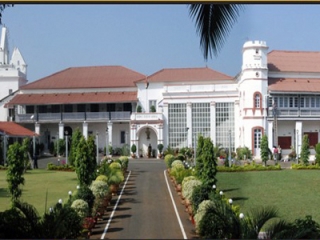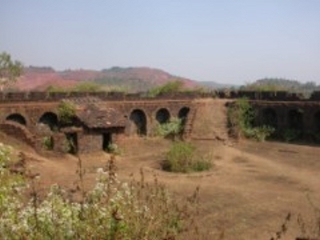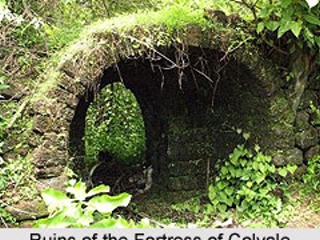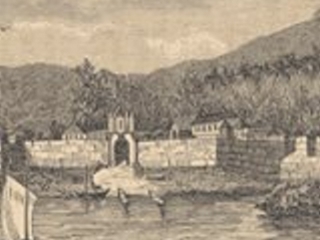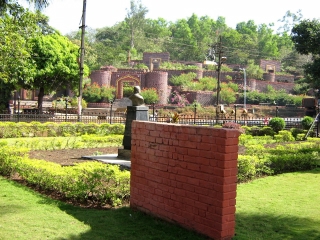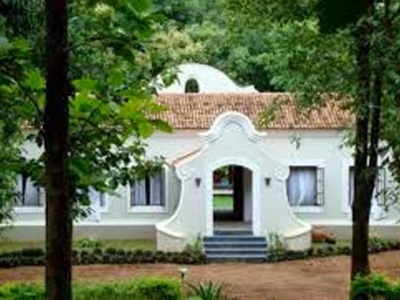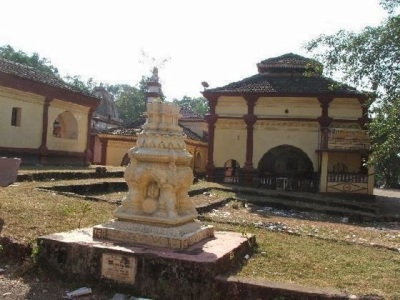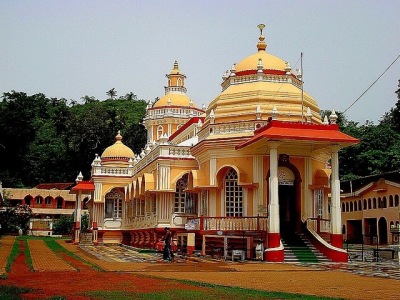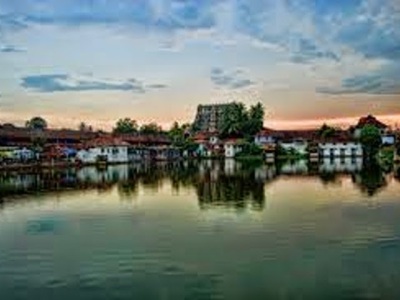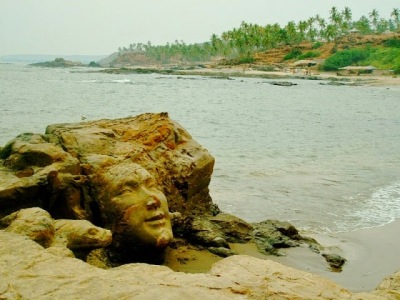Travel Goa – Part 3
Goa – The Land of Sand and Surf
Goa, the place that is known for sand, surf, shorelines, parties the rundown is essentially perpetual. Goa is the most event and most fascinating destination of India to spend the occasions. Goa India travel is one awesome approach to investigate the overpowering appeal of this gathering state.
Goa – Heaven For Beach Parties
Prop yourself to have a fabulous time on the charming Goa shorelines while observing over the ocean waves go back and forth. In the event that you are a gathering creature then nothing can coordinate the energy of being in Goa India.
Popular world over for its shoreline gatherings and moon light gatherings, Goa nightlife has its own particular enchantment that is just so compelling.
Goa India – Honeymooners Paradise
Not just this Goa is additionally an extremely culminate destination for youthful honeymooners. The shorelines, places of worship, urban communities all in together make this place a paradise for honeymooning couple. Over all a sentimental Goa journey will add more sentiment to your trek.
Destinations
Panjim
Called Panjim by the Portuguese, Panaji, which signifies “the area that does not surge” is the state capital of Goa. Dissimilar to numerous capital urban communities, Panaji has an unmistakable unhurried character.
It is arranged on the southern banks of the Mandovi River, which makes this town all the all the more enchanting.
Attractions
i. The European Ambience
Run of the mill of a Goan town, Panaji is manufactured around a congregation confronting an unmistakable square. The town has some delightful Portuguese Baroque style structures and charming old manors.
The riverside, dotted with splendidly whitewashed houses with created iron galleries, offers a fine view. There are some fine government structures along the riverside street, and the Passport Office is particularly essential.
In the 16th century, the building was the castle of Adil Shah (the Sultan of Bijapur). The Portuguese assumed control over the castle and developed the Viceregal Lodge in 1615. In 1843, the structure turned into the Secretariat, and today it is the Passport Office.
Goan Dance, Panjim, Goa, Panajim, GoaTrudge around town in the cobbled back streets to see interesting old bars and bistros with some environment, and basically no travelers. They are a decent place to meet the neighborhood individuals.
The Largo Da Igreja Church Square is a fine outline of the marvelous Portuguese Baroque style. The Church of the Immaculate Conception is effortlessly a standout amongst the most rich and pleasant landmarks in Goa.
Inherent in 1541 AD, on a high, symmetrical, befuddling stairway, the congregation is a white building finished with a tremendous ringer that stands in the middle of two sensitive Baroque style towers.
The Braganza Institute, houses the tiled frieze, which portrays the “legendary” representation of the colonization of Goa by the Portuguese. Fountainhas is an exquisite old local location in the midst of shady cobbled avenues uniting red-tile-roofed houses with overhanging galleries, much like a nation town in Spain or Portugal.
ii. PANJIM AND CENTRAL GOA
Miramar Beach Near Panjim, Panajim, GoaTake any medium sized Portuguese town include a sprinkling of banana trees and auto-rickshaws, douse yearly with heavy tropical rain, and leave to stew in savage sticky daylight for no less than one hundred and fifty years,
And one’ll end up with something like Panjim. The Goan capital has a totally diverse feel from some other Indian city
iii. Dona Paula Beach
At the spot where two of Goa’s acclaimed waterways meet the Arabian Sea is the disengaged cove of Dona Paula with a fine perspective of the Marmagao Harbor. 7-km from Panjim, settled on the south side of the rough,
This is a place of mallet molded headland that partitions the Zuari and Mandovi estuaries, this previous angling town is these days a popularized resort. This is an untainted spot to unwind and sunbathe. Water scootering offices are likewise accessible here.
The authority living arrangement of the Governor of Goa, Known as Cabo Raj Bhavan is arranged on the westernmost tip of Dona Paula. Along the street prompting this spot lies the vestiges of the little military cemetery the British manufactured at their brief control of the Cabo, to deflect the French from attacking Goa.
A Love Story
Named after Dona Paula de Menezes, this spot is known as the Lovers Paradise because of a myth that has been appended to this spot. Concurring one legend the Viceroy’s little girl in the wake of confronting complaints from her family about her relationship with a poor angler bounced of the precipice.
Another legend says that rebuffed for enamoring Francisco de Tavora, the Count of Alvor with her appeal the Viceroy’s girl was pushed off a bluff to suffocate in the waters beneath. Her irrepressible soul still keeps on frequenting each guest with legends of her mates.
She is even expected to have been seen rising up out of moonlit waves wearing just a pearl jewelry.
Water Sports
Quiet and blue, Dona Paula unwind a definitive in oceanic game and fun.Dona Paula Sports Club, Dona Paula offers a portion of the best water sports offices to the games lovers including Water-bike rides, Motor-pontoon rides, and so forth.
ii. Vestiges Of St. Augustine’s Tower
Inherent 1602, the main ruin of the Church of St. Augustine on the Holy Hill at Old Goa close to the Nunnery, is a grandiose 46-meter high tower challenging the exuberant downpours. The tower is one of the four of St. Augustine Church that once remained there.
There were eight lavishly beautified sanctuaries and four sacrificial tables, and a religious community with various cells and creative sections appended to the congregation.
iii. Remains Of St. Augustine’s Tower, Goa
The Church when in place was maybe the greatest in Goa. With the religious concealment in 1835, the Augustinians abandoned the congregation and the cloister. The last was utilized for quite a while by the beneficent organization of the Misericordia.
The structures fell into disregard bringing about the breakdown of the vault on 8 September 1842. The Government appropriated the property offering the materials the accompanying year. The façade and 50% of the tower fell in 1931 and some more parts of it caved in 1938.
iv. The Chapel Of Our Lady Of The Mount
As one returns, around 2-km on the primary street towards Ponda, a Kuchcha street branches off towards north at a spot where a cross is altered. The street prompts a slope on which, instructing a pleasant perspective, is the Chapel of Our Lady of the Mount.
A progression of steps prompts the Chapel, which is assembled of laterite put with lime mortar. It has three principle holy places devoted individually to our woman of the mount, St. Anthony and St. Andrew.
The sanctuary was fabricated under the requests of Afonso de Albuquerque in 1510 and is alluded to as in presence in 1519. It was reproduced twice.
v. The Church And Convent Of St Monica
In the Holy Hill, while in transit to the Church of Our Lady of the Rosary , is an enormous three-storeyed building of laterite which was initially lime-put however is presently put with concrete. It is square on arrangement with a substantial internal yard,
The yard around which is a secluded verandah and various cells and lobbies. The vaulted roofs in a percentage of the lobbies are tastefully painted with flower designs and scenes from the Holy book of scriptures.
The development of the community and the congregation of St. Monica was started in 1606 and finished in 1627. The building was pulverized in a flame in 1636 and re-fabricated the accompanying year.
vi. The Convent Or The Royal Monastery
The community is additionally alluded to as the illustrious cloister by virtue of the regal support it appreciated. There were eleven churches in the religious circle separated from the novitiate and the theological college for young ladies.
The congregation in the religious community is committed to St. Mary. At present the building houses the Mater dei Institute for nuns, which was initiated in 1964.
vii. The Church Of Our Lady Of The Rosary
Not far toward the west of the Basilica of the Bom Jesus is the Holy Hill at the limit of which is the Church of Our Lady of the Rosary. Assembled of laterite and put with lime mortar, it has a two-storeyed colonnade.
The colonnade and additionally the façade of the congregation has adjusted towers on either favor the cross on top. The top of the congregation is tiled, bolstered by wooden rafters.
viii. The Chapels And Altars
There are two churches and three sacred places. The primary sacrificial stone is committed to our Lady of the Rosary. The congregation, with windows close to the rooftop and with adjusted towers giving an impression of a fortification church,
It is Masculine in style however Gothic impact can be seen in the rib-vault at the porch.
ix. Cenotaph Of Dona Catarina
To one side of the primary holy place is a marble cenotaph honoring Dona Catarina whose marriage with Viceroy Garcia De Sa was performed by St. Francis Xavier. The cenotaph marginally anticipating from the divider is creatively enriched with cut smaller than expected columns
The engravings in Portuguese and has a triangular pediment delegated by a shell forming. The foliage and different adornments radiating from a vase nearly look like those on the tombs of Gujarat, in this manner proposing impact of a territorial craftsmanship style.
This votive house of prayer was manufactured in satisfaction of a pledge taken by Afonso de Albuquerque while inspecting the fight between his powers and those of the Bijapur sultan from the same spot, on which the congregation stands.
The promise, notwithstanding, could be satisfied strictly when his demise, since this congregation was constructed in 1544-49.
x. The Convent and Church Of St. Francis Of Assisi
Toward the west of the Se Cathedral is the previous castle of the Archbishop that unites the Se Cathedral to the Convent and Church of St. Francis of Assisi. The structure is assembled of laterite squares and is lime-put.
The congregation confronts west and has a nave with three houses of prayer on either side, a choir, two sacrificial tables in the transept and a fundamental holy place. Toward the north of the primary sacred place is a tower and a sacristy.
The religious circle, which frames an annexure to the congregation, now houses the Archeological Museum.
xi. The Architectural Grandeur
The outside of the Church is of the Tuscan Order while the primary passage is in Manuline style. The primary sacred place is Baroque with Corinthian highlights. There are no paths however just a nave, which is rib-vaulted.
The inward support dividers, differentiating the houses of prayer and supporting the exhibition on top, have frescoes demonstrating unpredictable botanical plans. In a corner on the veneer, stands a statue of our woman of wonders acquired from Jaffna Sri Lanka.
A wooden statue of St. Francis of Assisi embellishes a platform bearing the emblem of the Franciscans. A wooden podium, luxuriously cut with flower outlines is to one side as one enters. Underneath a ribbed vault with frescoes demonstrating botanical improvements,
It is the fundamental sacrificial table, which is plated and has a lavishly cut specialty with a sanctuary bolstered by the four evangelists.
xii. The Tabernacle
The sanctuary was utilized for showing the sacred ceremony. Over the sanctuary, in the fundamental sacred place, is an expansive statue of St. Francis of Assisi and a similarly vast statue of Jesus on the cross.
Underneath the two figures are recorded the three promises of the Saint – neediness, modesty and acquiescence. On either side of the fundamental sacrificial stone, in the nave, are lovely extensive sketches on wood, delineating scenes from the life of St. Francis of Assai.
The scenes include:
(I) A holy messenger uncovering to his mom that she would bring forth a tyke who might turn into an awesome holy person
(II) His introduction to the world
(III) His first anointment
(IV) Praying at the congregation of St. Dominica when Jesus orders him to bolster his kingdom.
(V) The holy person taking the promise and joining the Dominican odder.
(VI) His visit to the Sultan of Damascus.
(VII) The holy person demonstrating his injuries to Pope Gregory IX. In the first floor on the western side, is the choir, which has in the midst of cut wooden boards, picture from Franciscan hagiology.
Source
The source of this congregation and the appended cloister can be followed to the humble beginnings made by eight Franciscan ministers, who, on their entry in 1517, secured from the then Governor a couple of houses that had a place with an expired Thanadar.
By their relentless endeavors they built a little sanctuary with three holy places and a choir. A congregation blessed to the Holy Ghost was assembled in 1521 and was later pulled down and the present church was based on the same spot in 1661 holding just the passage of the prior chapel.
xiii. Sanctuary of St. Francis Xavier
Behind the entryway of St. Paul’s school is a Kuchcha street fanning out the principle street, prompting the house of prayer of St. Francis Xavier. It is assembled of laterite put with lime mortar, with tiled rooftop bolstered by wooden rafters is a plain sanctuary with stand out sacrificial stone.
Structurally, it is of the Doric request. The Chapel was inside the nook of the College of St. Paul and was committed either to St. Anthony or to St. Jerome. As the sanctuary was utilized by St. Francis Xavier, it was re-committed to him after his canonization in 1622.
The first house of prayer was in presence in 1545. With the flare-up of the pandemic and the subsequent relinquishing of the school of St. Paul in 1570, the house of prayer fell into vestiges and the present sanctuary was assembled in 1884.
xiv. Aguda Fort
A spring inside the fortification gave water supply to the boats that called there, issuing it the name “Aguada” (signifying “water” in Portuguese). On the northern side, it gives a harbor to nearby delivering. The post, at present, houses the focal prison.
A 19th century assembled beacon is arranged inside the post. Promptly south of Candolim, a long promontory stretches out into the ocean, bringing the seven-kilometer white sandy shoreline to a sudden end.
Aguada Fort, which crowns the rough straightened top of the headland, is the best-protected Portuguese bastion in Goa. Inherent 1612 to ensure the northern shores of the Mandovi estuary from Dutch and Maratha marauders,
It is home to a few common springs, the first wellspring of drinking water accessible to ships touching base in Goa after the long ocean voyage from Lisbon.
xv. Archeological Museum
Representation Gallery
The gallery has been working subsequent to 1964 in the deserted community of St. Francis of Assisi and is kept up by the Archeological Survey of India (ASI). The gathering comprises of Brahmanical figures saint stones and sati stones of the early
And late medieval periods, representations, coins and coin, income and court charge stamps, wooden and bronze models and ordnance of the Portuguese period.
Restoring The Look
The Museum was revised and redesigned totally regarding the CHOGM Retreat in Goa amid 1982. A long lobby misleading the left half of the passage to the Museum was changed over into 2 exhibitions by laying RCC floor with a recently developed wide staircase at the compelling west to encourage access to the first floor.
The new Annexe constructing subsequently gave extra region to the current Museum lastly the whole first floor re-laid with a teakwood floor taking after the first so as to convey uniform look to the entire complex.
The 3-6m high bronze statue of Afonso de Albuquerque welcomes the guests at the passage. In the guests entryway ocean courses of right on time wayfarers, guide indicating site galleries in India, guide of Goa and a couple of photos of landmarks of Goa and Daman, and guide demonstrating midway ensured landmarks in India are in plain view.
The Key Gallery
The key exhibition in the ground floor serves as a prologue to the way of displays in the gallery. As one enters the key display the guest is acquainted with the short history of Goa as an open book put on a platform. The arrangement of the gallery is on the left sidewall.
Taking right turn one goes over a divider showcase containing center and upper Paleolithic stone apparatuses, Microliths and a couple of Neolithic Celts. A short authentic foundation highlighting the ancient times of Goa and the area of ancient destinations is demonstrated in the guide of Goa.
The second showcase manages the early history of Goa. The unearthed materials from Chandor, one of the antiquated capital urban communities of goa are shown in this showcase alongside the ground arrangement of a Brahmanical sanctuary and accessible early recorded artifacts i.e., cast copper coins of 3rd century BC, copper nails, rings, and so on.
The following periods of social grouping are indicated with the assistance of accessible models of the Brahmanical divinities and showed in sequential request with the bust of siva and parvati, trailed by the figures of the Silaharas and Kadambas of Goa
Shows/ Collection
Different questions on showcases are lintel of a sanctuary delineating different sorts of Shikharas, engineering pieces, sati-stones, legend stones, an engraved chunk containing Kannada engraving of ‘Devaraya’, the Vijayanagar ruler, recording the gift of a Jaina Basti,
Arabic and Portuguese engravings, wooden statue of John, the Baptist, compositions on wood/ canvas of Portuguese Governors Pedro de Castro, Fernando Martings Mascarenhas, nativity of Jesus, Jesus helping St. Joseph, and so forth regal crest,
Bishop ensign on stone, wooden figures of baby Jesus, St. Mary molded boards speaking to botanical enrichments, Goan sort wicker bin – brimming with products of the soil headstone of D. Diogo de Noronha, the first skipper of Daman,
Brahmanical Gods and Goddesses and Christian Saints are likewise displayed in a showcase in the middle of the huge lobby. Exhibition 2,3,4 and 5 are situated in the quadrangle in the ground floor. In Gallery 2 are shown models of different sorts of Shikharas, imitation of column, compositional pieces,
A Shiva-Linga and a ‘Nandi’. In Gallery 6, the guest can have a look at the short history of the canvases of Governors and Viceroys of Goa, before they continue to admire an expansive number of pictures on wood and canvas.
In the vertical sort coin showcase are displayed the Portuguese money and silver/copper/lead/metal coins. The significant groups incorporate the Portuguese Manoel, Leal and the indigenous Pardav, Tanga, Xerafins, Rupiah, and so on.
In this exhibition, wooden models of Jesus, St. Francis Xavier, St. Joseph and other Christian Saints are likewise in plain view. A model of the post of Diu is on perspective in this display. In Gallery 7 are shown the picture canvases of Governors/Viceroys.
In the showcase are shown the mortar cast bust of Philippe Bernado Guedes, Governor, on one side and the wooden statue of St. Dwindle on the other side. In Gallery 8 are shown the canvases of Governors/ Viceroys,
President of Portugal and Dr. Salazar, the head administrator of Portugal amid whose time Goa was freed by Indian armed force on 19th December 1961. In a little specialty on the northern divider is the bust of Queen Maria da Glorida of Portugal.
Before the Museum building are displayed six groups of distinctive sizes. A photo of Vassalo-de-Silva, the keep going Governor General is in plain view.
Showing Some Priceless Possessions
The vital displays in plain view in this Gallery are the standing Lord Vishnu joined by Goddess Lakshmi and Garuda on left and right individually, with choice carvings obliging ten incarnations on the Prabhavali, standing Surya joined by Danda and Pingala,
Gajalakshmi, Mahishasuramardini and situated Uma-Maheshvara.
xvi. Chronicles Museum
The Museum of Goa is housed at another Building at the Patto Plaze close to the Ourem brook, Panaji. The most foremost highlight of Panjim’s State Archeological Museum is its forcing size, which remains in glaringly backwards extent to the size of the accumulation inside.
In their offer to erect a structure befitting a state capital, Goa’s status-fixated officials overlooked the way that there was valuable little to put in it.
Displays/ Collection
The main rarities to be found in the midst of the faltering exhibit of sanctuary figure, saint stones and frump pilgrim time antiquities (additionally spelt as antiques) are a few excellent Jain bronzes safeguarded by traditions and extract authorities from dealers and, on the ground floor, photographs of the ancient rock carvings at Usgalimal
xvii. Bondla Forest
Up in the lavish foothills of the Western Ghats, Bondla is great spot to see Sambar and Wild Bear. It is littlest of the Goan Wildlife Sanctuaries. Its range is 8-sq-kms yet most effortless one to reach. Arranged 55-km from Panajim and 38-km from Margoa, the haven incorporates a Botanical Garden, fenced Deer Park and Zoo, which is superior to most, with sensibly roomy nooks.
A Nice Place For Outing
The zoo was initially settled to house stranded creatures, however its currently likewise rearing state for extensive types of deer. It covers 8-sq-kms of deciduous woods Bondla is a small zoo of confined creatures and fowls and a famous cookout destination for local people.
Elephant rides are an attrACTION here.
The Fauna
The slopes toward the southeast are populated by Monkeys, Wild Boar, Deer, Gaur, Langurs, Jackals, Pythons, and Leopards. Bondla is likewise another feathered creature viewing safe house like its partners at Chorao and Cotigao.
Rangado waterway streams on the east of this woods and Madhel on its north. Bondla backwoods home Bison, Wild Beer, Deer, Leopard, different sorts of serpent and feathered creatures. On to its way, the main mosque Safa Shahouri Masjid manufactured by Ali Adil Shah in 1560 can be seen at Ponda.
xviii. Calangute Beach
A Topping On Tourist Pie
A simple 45 moment transport ride up the coast from the capital, Calangute is Goa’s busiest and most popularized resort, and the leader of the state government’s offered for a greater cut of India’s bundle visitor pie.
In the 1970s and mid 1980s, this once quiet angling Village embodied Goa’s notoriety for being a shelter for indulgent radicals.
The Town And The Beach
The street from the town to the shoreline is lined with Kashmiri-run craftsmanship boutiques and Tibetan slows down offering Himalayan doodads and gems. The nature of the merchandise – for the most part Rajasthani, Gujarati and Karnatakan materials –
It is by and large high. Deal hard and don’t be hesitant to leave a substantial deals pitch – the same stuff products up every Wednesday at Anjuna’s bug market. The shoreline itself is nothing exceptional, with steeply racking sand, however is more than sufficiently expansive to suit the tremendous quantities of high-season guests.
To escape the peddlers, head fifteen minutes or thereabouts south of the fundamental beachfront territory, towards the columns of olf wooden watercrafts moored beneath the hills. In this for all intents and purposes vendor free zone, one’ll just run over groups of villagers pulling under control nets at high tide or anglers altering their tack under bamboo sun shakes.
Eating Out
Calangute’s bars and eateries are chiefly gathered around the passageway to the shoreline and along the Baga street. Similarly as with most Goan resorts, the stress is immovably on fish, however numerous spots attach a couple of token vegan dishes.
Western breakfasts additionally highlight conspicuously.
Excitement
On account of rehashed crackdowns by the Goan police on gatherings and uproarious music, Calangute’s nightlife is shockingly manageable. Everything except a modest bunch of the bars end up by 10.00 pm.
One outstanding exemption is Tito’s at the Baga end of the shoreline, which stays open until 11.00 pm off-season and into the little hours in late December and January. Tragically, the main different spots that reliably stay open during that time are a few dull hippy hang-outs in the forested areas toward the south of the shoreline street;
Pete’s Bar, a perpetual most loved adjacent to Angela P. Fernandes, is for the most part the most enthusiastic, offering moderate beverages, backgammon sets and constant reggae. Further away from home,
Bob’s Inn, in the middle of Calangute and Candolim, is another prevalent bar, renowned worldwide less for its court around a substantial table in the front bar.
xix. Miramar Beach
While in transit to Dona Paula, 1-km in front of the juncture of the Arabian Sea and Mandvi River, under the palm shade, is “Gasper Dias” or Miramar Beach and is only 3-km far from the capital city of Panjim.
In Portuguese dialect “Miramar” stand for survey the ocean. Arranged on a decent area for night strolls, the coast is spread upto 2-km, having a fine shimmering sand bed. From here one has a great perspective of the Aguada fortification right over the Mandovi River.
xx. Se Cathedral in Goa
The Portuguese Viceroy Redondo dispatched the Se, or St. Catherine’s’ Cathedral, southwest of St. Cajetan’s, to be “a self important church deserving of the riches, influence and notoriety of the Portuguese who overwhelmed the oceans from the Atlantic to the Pacific”.
Today it stands bigger than any congregation in Portugal, in spite of the fact that it was plagued by issues, not minimum an absence of stores and Portugal’s impermanent loss of autonomy to Spain. It took eighty years to manufacture and was not sancified until 1640.
xxi. Condolim Beach
Four or five years back, Candolim, at the far southern end of Calangute shoreline, was a shockingly calm resort, speaking to an odd mixture of working class Bombayites, and Burgundy-clad Sannyasins enjoying a reprieve from the Rajneesh Ashram at Pune.
xxii. Church Square
The verdant rectangular stop inverse the Indian Government Tourist Office, known as Church Square or the civil patio nursery, shapes the heart of Panjim. Managing its east side is the town’s most particular and photogenic point of interest,
The toothpaste white ornate façade of the Church of Our Lady of the Immaculate Conception. Flanked by lines of slim palm trees, at the leader of a jumbling laterite walkway, the congregation was constructed in 1541 for the advantage of mariners touching base here from Lisbon.
The tired sailors would stumble up from the quay to offer gratitude for their safe section before continuing to the capital at Old Goa – the first home of the colossal ringer that dangles from its focal peak.
xxiii. Fontainhas
Panjim’s most established and most fascinating area, Fontainhas, lies instantly west of Pato, disregarding the banks of the sleek green Ourem Creek. From the footbridge between the transport stand and town focus, twelve or somewhere in the vicinity squares of neoclassical houses ascend in a tangle o terracotta roofs up the sides of Altinho Hill.
At break time, Vespas stand sit still on left road corners, while ladies in western garments trade merriments with their neighbors from open windows and verdant verandahs. Numerous building have held their conventional layer of ochre, pale, yellow, green or blue- a legacy of the Portuguese request that each Goan building ought to be shading washed after storms.
xxiv. Sao Tome
Sao tome ward is the other old quarter, lying north of Fontainhas on the most distant side of Emilio Gracia Road. This is the range to set out toward if one favor a bar creep: the tight lanes are specked with many opening in-the -divider bars, serving shoddy, solid measures of rocket fuel “Feni” under strip lights and the watchful look of brilliant Madonnas.
xxv. The Chapel Of St. Sebastian
At the southern end of the area, the immaculate whitewashed Chapel of St. Sebastian is one of numerous Goan holy places to stay dedicated to the old pioneer order. It remains toward the end of a little square where Fontainhas’ is.
Portuguese talking local people hold an enthusiastic yearly road holiday to praise their benefactor Saint’s day in mid-November. The shockingly similar cross inside the house of prayer, acquired here 1812, earlier hung in the royal residence of the probe in Old Goa.
Bizarrely, Christ’s eyes are open – supposedly to move fear in those being grilled by the inquisitors.
xxvi. The Secretariat: Panjim
The street that runs north from the congregation brings you out at the riverside close to Panjim’s most seasoned surviving building. With its inclining tiled rooftops, cut stone emblems and wooden verandahs, the stalwart secretariat looks commonly pioneer.
Yet it was initially The Summer Palace of Goa’s 16th century Muslim ruler, the ‘Adil Shah. Later, the Portuguese changed over it into a provisional rest house for the region’s Governors and after that a home for the Viceroy.
Today, it suits the Goan State Legislature. Hundred meters east from the building is arranged an unconventional statue of a man holding his hands over the assortment of a hypnotized leaning back lady shows Abbe Farin, a Goan minister who emigrated to France to turn into one of the world’s first expert trance specialists.
xxvii. The Town: Panjim
Until 10 years prior, most guests’ first look of Panjim was from the decks of the Old Bombay steamer as it chugged into dock at the now old ship slope. Nowadays, notwithstanding, in spite of the late initiation of the Konkan line, and Damania’s sailboat administration from Mumbai,
The town is most typically approached by street – from the north by means of the enormous Ferro-solid extension that compasses the Mandovi estuary, or from the south on the as of late redid NH-7, which interfaces the capital with the airplane terminal and railhead at Vasco da Gama.
In any case, one will need to go through the suburb of Pato, home of the fundamental Kadamba Bus Terminal, before intersection Ourem Creek to land in legitimate Panjim. West of Fontainhas, the pleasant Portuguese quarter,
The business focus’ network of long straight lanes fans out west from Panjim’s key historic point, Church Square. Further north, the primary avenue, Avenida Dom Joao Castro, clears past the Head Post Office and Secretariat Building, before bowing west along the waterfront
xxviii. Sri Devaki Krishna Temple
3-km far from Banastari Bridge on Panaji -Ponda Road is arranged the paramount sanctuary committed to Devaki Krishna at Marcel. The god is said to have been acquired from Chorao Tiswadi to Mayhem in Bicholim and after that moved to its available spot amid the times of religious oppression by the outsider rulers.
The Garbha Griha contains the lovely icon of Devaki and Lord Krishna. The icon of Devaki is in standing carriage with a youngster Krishna, sitting on the back of her hip. This specific posture is thought to be extraordinary in Goa.
The symbols are wonderfully cut in dark stone. The real celebration is Malni Purnima from Paush Vadya is commended. here with incredible intensity and fervor.
xxix. Sri Mahadev Temple, Tambdi Surla
Amid the rule of Kadambas, in the 13th century, the Goan region flourished in all bearings because of kindhearted organization of the edified rulers. A few sanctuaries were assembled for all the divine forces of Hindu Pantheon, as Nageswar, Vithal,
Santadurga, Mahalaxmi (likewise spelt as Mahalakshmi), Ramnath, and so forth. Sadly, a large portion of them were leveled to ground by the outsiders, why should outsiders society and refinement.
After over 400 years of murkiness, a portion of the surviving holy places opened their ways to bear on exercises for open advantage. Because of outside effect, numerous sanctuaries appear to be putting on a polish of western civilisation, yet profound examination demonstrates, that the center of Hindu society stayed untainted, perfect and element.
In the sanctuaries revamped or fabricated once again, as previously, “Agamic Puja”, with all ceremonies, is being led showing that the greatly beautified Hinduism has not lost its essentialness, nor has dealt away its eminence amid the outside principle.
The Mahadev sanctuary at Tambdi Surla where old conventions are taken after serves as a sample to this. Arranged in West Goa, the Mahadeva Temple in Tambdi Surla is the state’s just unmistakable indication of the pre portuguese sanctuary construction modeling.
Kept up by the ASI (Archeological Survey of India), this 12th century sanctuary brags of some fine help’s on the “Shikhara” (tower) delineating a plenty of divine beings and goddesses. It was fabricated in the Yadava style of construction modeling with all the fundamental parts,
As Garbhagriha, Mukha Mandapa, Mini-sanctuaries, and so forth and presents a greatly terrific look. Try not to miss the amazing cut divider close to the passageway, and the etched stone monument columns.
xxx. Sri Mahalakshmi Temple
The sanctuary visit can be continued by offering surrenders unto Goddess Mahalakshmi, the directing divinity of Panaji, the capital of Goa. The primary sanctuary has been recreated as of late. The primary celebrations at this sanctuary are Navaratri and Chaitra Purnima.
A kilometer away and roosted on the Altinho hillock disregarding the Mandovi River is the sanctuary of Sri Maruti, which is similarly belittled by the city tenants. The Maruti Zatra in the month of February draws huge hordes of aficionados from far and close.
xxxi. Sri Saptakoteshwar Temple
As one tries to come back to Panaji from Harvalem, one can visit the well known sanctuary of Sri Saptakoteshwar Naroa, Bicholim. Sri Saptakoteshwara was the benefactor god of the Kadambas who had constructed a lovely sanctuary committed to this divinity at the Diwar Island.
The attacking remote rulers pulverized the sanctuary and manufactured a church devoted to Candelaria in 1641 AD. The picture of Sri Saptakoteshwara was moved to Naroa by the aficionados then. It was Chatrapati Shivaji Maharaj who requested redesign of the sanctuary in 1668.
xxxii. An Abode Of Shavaite Worshippers
The Kadamba lords were staunch Shaivaites and disparaged human expressions to a praiseworthy degree that merits imitating more than appreciation. Their immense sanctuaries enhanced with wonderful figure and compositional excellences,
However constructed in the range of seven centuries back, are as yet alluring the consideration of the theists and voyagers. Notwithstanding their outside loftiness and eminence being tried by the impulses of time; their otherworldly luster is as yet lighting up the ways of the sincere seekers.
The Shiva sanctuaries assembled at Tambdisurla and Naven-Bicholim are vouching for the rulers’ reverential energy and their tend to open enthusiasm.
Compositional Style
The popular Saptakoteshwara sanctuary is a standing example of medieval building style and mirrors the rulers’ refinement and specialists, predominant craftsmanship. It is carefully improved with sculptural enhancements.
It is an enormous sanctuary with forcing tower, immeasurable yards and a few small scale holy places for all the head Shaivate divine beings. The Archamurti- Shivalinga is called “Dhara-Linga”. Its greatness and shimmering shine constrains one to raise his hands and fills the souls with exctasy. It was the favored divinity of the rulers.
xxxiii. Sri Vithal Temple
From Kansarpal one can continue to Sanquelim, the main residence of the Ranes of Satari who assumed key part in Goa’s opportunity battle. The progenitors of the present Rane family, why should accepted have relocated to Goa from Udaipur around 600 years back, constructed the renowned Sri Vithal sanctuary arranged on the bank of Valvanta River.
The sanctuary was remade in 1942 AD, joining the North India style of sanctuary building design however sanctum-sanctorium was left untouched. The primary celebrations at the sanctuary are held amid the nine days going before “Chairtra Purnima”.
A perfectly cut wooden chariot symbolizing the chariot of Arjuna of Mahabharata and driven by Lord Krishna is a vital attrACTION of the sanctuary complex.
xxxiv. The Chapel Of St. Catherine,
Further toward the west of the Church of St. Francis of Assisi is the sanctuary of St. Catherine. Assembled of laterite pieces it has a tower on either side of the façade. The church in the inside, having stand out sacrificial stone is plain.
xxxv. Development of The Chapel
The sanctuary was modified in 1552 on the remaining parts of a prior structure, constructed in 1510 by Afonso de Albuquerque to remember his entrance into the city on St. Catherine’s Day. The prior church was broadened in 1550 by the Governor George Cabral, who set up a recorded section, which when deciphered, peruses as takes after:
“Here in this spot was the entryway through which Governor Afonso de Albuquerque entered and took this city from the Mohammadans upon the arrival of St. Catherine in the year 1510 at the costs of his Highness.”
Thus the house of prayer was based on the spot where stood the entryways of this city under the Muslim standard. This sanctuary was raised to the condition of the church by Pope Paul III by a Bull issued in 1534 and it remained so till the new Cathedral was developed.
xxxvi. The Church Of St. Cajetan
Inverse the Se Cathedral, past the street is the expansive and excellent church of St. Cajetan assembled of laterite squares, which were lime put. The façade, having two towers on either side to serve as steeple, has Corinthian sections and pilasters supporting a pediment, and four corners in which are kept the statues of the messengers.
The Greek Influence
The fundamental assortment of the congregation is Greek cross on arrangement inside and elliptical remotely, with a nave finishing in an apse and paths stamped by four huge wharfs confronted by Corinthian pilasters.
These docks likewise shape the base for supporting, at the intersection, a round arch that lays on a drum and was delegated by a lamp. The ribbed vaults of the nave and walkways are of shifting tallness and are coffered with distinctive botanical outlines.
The two-ocatgonal rooms having domical rooftops on either side of the fundamental sacrificial stone serves as the sacristy.
Florid Style Altars
There are six holy places other than the primary one, which is devoted to our woman of heavenly fortune. These sacrificial tables are lavishly cut and overlaid in Baroque style with curved shafts and figures of edges ruling in each.
The sacred places likewise have artistic creations on canvas of the Italian school, some portraying scenes from the life of St. Cajetan. The specialties running at the edges of the vault have wooden statues of holy people.
The three holy places on the left side, as one enters, are devoted to the Holy family, Our Lady of Piety and St. Clare, while to one side are those of St. John, St. Cajetan and St. Agnes. There is a designed wooden lectern anticipating from one of the docks.
In the intersection is a square raised stage, which serves as a podium. There is a tank or a well underneath it that has prompted numerous guesses. Some respect that the stage covers the blessed tank of a Hindu sanctuary that once existed here,
This is a time while others clarify that the water supply at the focal point of the building was deliberately arranged by the designer to manage the cost of more noteworthy strength to the structure. This congregation, which is demonstrated on the first outline of St. Diminish’s Church in Rome,
It is structurally Corinthian both remotely and inside while the plated sacrificial stones with rich carvings are in extravagant style. The congregation was manufactured by Italian monks of the Order of Theatines who were sent by the Pope Urban III to lecture Christianity in the kingdom of Golconda.
As they were not allowed to work there they settled down in Goa in 1640. They acquired the site in 1655 by a Royal request and the congregation was assembled in the 17th century.
xxxvi. Church Of the Carmelites
Nothing stays of the Church of the Carmelites with the exception of the façade and a raised asphalt, which served as a holy place. Its area is toward the southeast of the Church of St. Cajetan and is on a slope pretty much touching to the slope on which the Chapel of Our Lady of the Mount stands.
The congregation was manufactured in 1621. The Carmelites, on their declining to take the Oath of Allegiance to the ruler, were removed from Goa in 1707. The congregation fell into neglect and demolishes before long.
xxxvii. The Convent And The Church Of St. John Of God
Arranged toward the east of the tower of St. Augustine it is a plain looking building built at the outset of the 18th century. The cloister was relinquished in 1835. The Society of the Misericordia involved it for quite a while.
From 1844 onwards, it was utilized as a habitation for clergymen, inquisitors and others utilized in the interest of the nuns of St. Monica. The top of the congregation was uprooted in 1850. The present rooftop was manufactured as of late.
xxxviii. The Convent And The Church Of The Cross Of Miracle
On the southern edges of Old Goa is a slope on which stand this religious community and church. Assembled of laterite, put with lime mortar, the plain looking church and the single storeyed religious circle with various cells are currently in remnants.
A congregation, exceptionally fabricated in 1619 to house the Cross of Miracles, having disintegrated, the present church was based on the same spot in 1674. The Convent housed the assembly of the Oratory of Philip Neri of Goa.
In 1835, the Church and the religious circle were surrendered. The Cross of Miracles was exchanged to a sanctuary in the Se Cathedral in 1845.
xxxix. The Professed House
Instantly toward the south of the principle street is the Professed House, a two-storeyed laterite building secured with lime mortar. Regardless of the restriction, which the Jesuits confronted, the building was finished in 1585.
A piece of the building was incidentally torched in 1663 and was remade in 1783.
xxxx. The Church Of Bom Jesus
The Church of Bom Jesus is likewise of laterite; its outside, with the exception of the veneer, was lime put, which was along these lines uprooted. The rooftop was initially tiled. The congregation is cruciform on arrangement.
The flying supports on the northern side of the congregation are late increases. A solitary storeyed structure connecting the congregation on its southern wing join it with the claimed house. The three-storeyed veneer confronting west, indicates Ionic,
Doric and Corinthian Orders, and a principle passageway flanked by two littler ones, each having Corinthian sections supporting a pediment. Inside the congregation are two churches, a fundamental sacred place and a sacristy other than a choir at the passageway. A steeple is at the back.
A Blend OF Renaissance & Baroque Styles
An anticipating display, which was expected for the utilization of dignitaries on serious events, runs along the two more drawn out sides. But the lavishly plated holy places, the inside of the congregation is exceptional for its effortlessness.
While the veneer has the established requests of the Renaissance, the sacrificial tables are in Baroque style. The congregation is called “Bom Jesus” signifying ‘great Jesus’ or ‘baby Jesus’ to whom it is committed. The exterior has on it, at the top, the letters,
“HIS” which are the initial three letters of Jesus in Greek. The two segments supporting the choir bear pieces engraved in Portuguese and Latin recording that the development of this Church of Jesus was initiated on 24 November 1594
Fr.Alexis de Menezes, the Archbishop of Goa and Primate of India sancified it on 15 May 1605, when it was finished.
Inside The Church’s Domicile
As one enters, underneath the choir, to one side is a sacrificial table of St. Anthony and to one side is an exceedingly all around cut wooden statue of St. Francis Xavier. Amidst the nave on the northern divider is the cenotaph of the advocate of this congregation,
Dom Jeronimo Mascarenhas, the Captain of Cochin, who kicked the bucket in 1593, handing down the assets out of which this congregation was fabricated. Inverse the cenotaph, anticipating on the southern divider is an abundantly cut wooden platform with a shade on top.
The podium has on its three sides the figures of Jesus, the four evangelists and four specialists of the congregation. The base of the podium portrays seven figures just as supporting it.
The Main Altar
The primary sacrificial stone toward the end of the nave is flanked by two brightened holy places in the transept, one committed to Our Lady of Hope and the other to St. Michael. The lavishly overlaid principle holy place has the figure of baby Jesus or more it is an extensive statue of St. Ignatius
Loyola, organizer of the request of Jesuits, looking with intensity at an emblem on which is recorded “HIS”. Over the emblem, the Holy trinity – the Father, the Son and the Holy Ghost are delineated. In the transept on the northern side is the Chapel of the Blessed Sacrament.
xxxxi. The Chapel
On the southern side in the transept is a church with plated curved segments and botanical embellishments of wood, where the holy relics of the assemblage of St. Francis Xavier are kept. The inside of this sanctuary is lavishly enhanced with wooden carvings and artistic creations, portraying the scenes from the life of the Saint.
xxxxii. The Ornate Grandeur
The rectangular base of the tomb is of jasper of ruddy and purple hues enhanced with carvings in white marble. Over the storm cellar is another rectangular mass of marginally lesser measurements having a plaque in bronze on each of its four sides portraying the scenes from the life of the holy person, and two angels holding parchments.
Importance
Depicting The Life Of St. Xavier Through Painting. On the southern divider are artworks in Italian School organized in three columns. In the base column are two artistic creations indicating St. Francis Xavier being gotten by certain Portuguese aristocrats and his meeting with the King of Bango in Japan.
In the center column are three artworks individually indicating Xavier supplicating with intensity for discontinuance of disease that softened out up Manas Island, kissing the frightful ulcer wound of a patient in a clinic at Venice and the Pope Paul III professing his biblical beatitude on the eve of his takeoff to India.
In the top line are, three works of art of Xavier as a worker of a knight, his miserable end at Sancian, an island off the shore of China and the holy person in joy. There are additionally different canvases on the staying three sides of the house of prayer,
Settled in enhanced wooden edges portraying the scenes from his life and the wonders performed by him. An artistic creation, in oil on canvas, of ST. Francis Xavier is mounted on the highest point of the wooden entryway at the back of the church
xxxxiii. The Royal Chapel of St. Anthony
Toward the west of the tower of St. Augustine is the Royal Chapel committed to St. Anthony, the national holy person of Portugal and held in awesome reverence by the Portuguese. It was fabricated to start with of the 17th century.
In 1835 the house of prayer was shut however opened again in 1894 when it was additionally revamped. It was initiated again in 1961 after complete reclamation done by the Portuguese Government.
xxxxiv. Bhagwan Mahavir Sanctuary
Along the north from Panaji making progress toward Belgaum, is a haven that covers 240-sq-kms. Thick timberland clad the slants of the Western Ghats that is rich in untamed life and a heaven for fowl watchers.
Police Outpost at the door of the asylum in quiet and calm surroundings is similar to a sketch on a canvas in Malem. There are vital geological and authentic highlights in this haven. Jeeps on private game plans go to the inside of the timberland. Mahabir is especially known for its Leopards, Elephants, Deers & Gaur Or Indian Bison.
It is more convienient to view wild creatures from the Devil’s Canion View Point. Winged creature partners might likewise locate their best time here. The renowned sanctuary of Tambdisurla of the Kadambas is arranged 13-km from here.
In Mangalore To Margao travel on Konkan Railway one can appreciate Malem with Dudhsagar through the windows.
Bonderam Festival
The gala of Bonderam is commended on the fourth Saturday of August consistently at Divar Island, 12-km from Panjim. On this day, the quiant place where there is Divar, far from the rushing about of Panjim, is agog with energy.
Resonant music float from the town to terrain Old Goa – once the center point of Portuguese Goa – even before the beginning of the day on the Saturday.
xxxxv. Cabo Raj Niwas Or The Cabo Palace
Inherent 1540 AD inverse Fort Aguada on the south headland of the stream Mandovi, the Cabo (the Portuguese word for cape) Palace post housed the Franciscan cloister, which later (1594 AD) turned into the authority living arrangement of the Governor of Goa.
Holding the most surrounding view one can witness in Goa with the Indian Ocean towards the west, the Bay of the waterway Mandovi and Fort Aguada on the north and the occupied port of Mormugao. Staying inhabited
And segregated for a considerable length of time, it is trusted some human residence probably been display here but since of its fenced in area in a thick wild, no indications of prior settlements found. The excellence, isolation and uniqueness and all around arranged highlights are a portion of the principle attrACTIONs of the Cabo.
A little Chapel was developed at the very end of the chateau committed to Our virgin woman of The cape (Nossa Senhora do Cabo). It additionally served as a milestone for the seafarers.
Snap here for Forts Tour in Goa
The Construction Of The Fortress
The precise date about the first development of the stronghold is not known but rather in an as of late found note dated 30th June 1541, there was a proposition to find a Franciscan minister at the house of prayer, which effectively existed.
In 1540, the eighth Governor, D. Estevao de Gama, proposed the thought of building a few strongholds at the chateau site to protect the passageway to both the Mandovi and Zuari waterways. The Cabo was changed over into one of the best prepared and imperative strongholds throughout the years.
Making Of The Monastery
Meanwhile, the church got the consideration of the Viceroy D. Matias d Albuquerque (1591-97) who turned into one of its submitted enthusiasts. He was a defender of the changed Franciscan monks known as “Remembers”.
The Viceroy chose to remake the house of prayer furthermore developed a cloister close to it. He paid all the costs included in its development. He even forced a condition that the Franciscans would care for the house of prayer and if by any chance they need to leave the spot, it would be given over to the archdiocese for legitimate support.
The establishment of the cloister was laid begun of on 5th February 1594 by Bishop de Santa Maria and was finished inside the time of six months just, precisely on 14th July 1594. The entire development was finished with laterite stones, which is accessible at the site.
The Cabo is on a stone of laterite and it was separated from the rough landmass on the spot. The pits shaped from the extrACTIONs of stone were then secured to shape reservoirs to which water was conveyed through the slanting tops of the buildings.
This gave magnificent capacity tanks to water. This framework was likewise completed in different fortifications present in Goa.
xxxxvi. The Present Raj Niwas
The Cabo Palace is currently known as the Raj Bahavan, the authority name given to the habitation of the Governors of the States In India. It is additionally considered as a real part of the finest habitations of Indian Governors
And is undoubtedly the most seasoned as no other living arrangement of a Governor of a State in India. Governors and is undoubtedly the most established as no other home of a Governor of a State in India had its inception to more than four hundred years before.
The authority gathering territory comprises region comprises of an extensive corridor called the Darbar Hall, utilized at the season of gatherings and swearing in services and other authority events. The Dining room has a seating limit of more than 30 persons.
The living quarters of the Governor and his family are on the same floor. A gleaming verandah runs along the whole divide ignoring the Mandovi Bay and the Arabian Sea issuing one an inclination of being on a ship’s deck.
There are three suites and seven twofold spaces for visitors. The workplaces of the Governor, his secretariat and staff are situated on the ground floor in a different extension.
Collectibles Within The Palace
The Raj Bhavan has a fine gathering o Bohemian crystal fixtures, Chinese porcelain, silver and furniture. The most amazing are the excellent bits of obsolescent Chinese porcelain apparently produced in Canton.
xxxxvii. Carambolim Lake
Only east of Old Goa, the lily-secured Carambolim Lake has a huge measure of waterfowl, numerous Egrets and Heron, Bronze-Winged, Pheasant-Tailed Jacana and a great many extraordinary animal varieties, for example, Comb Duck and Cotton Pygmy-Goose.
xxxxviii. Kesarval Springs
Arranged 22-km from Panaji on Verna level simply off the Panaji -Margao roadway, the spring rises up out of hard reduced shakes and individuals bathe in its water with solid conviction that it has restorative properties.
xxxxix. The Gate Of The College Of St. Paul
The College of St. Paul, once the primary foundation of Jesuits in India for granting information on Christianity, was fabricated over the remains of a mosque south of St. Cajetan’s congregation at Old Goa in 1542. In any case, it was deserted amid the episode of maladie in 1570 and went into neglect.
The Government wrecked this destroying structure in 1832 to convey materials for building development in Panaji. What stays of the school that was finished in 1542 and of the university church blessed on 25 January 1543
It is the façade fit as a fiddle of a curve with a corner at the top and a cross delegated it. The curve that prompted the College as a portal is fabricated of laterite, flanked on either side by a basalt segment of the Corinthian request on raised plinth, and bolstered by basalt pilasters of the Doric request.
The College of St. Paul, once the key organization of Jesuits in India for granting information on Christianity, was assembled over the remains of a mosque south of St. Cajetan’s congregation at Old Goa in 1542.
Nonetheless, it was relinquished amid the episode of disease in 1570 and went into neglect. The Government destroyed this demolishing structure in 1832 to convey materials for building development in Panaji.
What stays of the school that was finished in 1542 and of the university church blessed on 25 January 1543 is the façade fit as a fiddle of a curve with a corner at the top and a cross delegated it. The curve that prompted the College as a portal is fabricated of laterite,
This is flanked on either side by a basalt section of the Corinthian request on raised plinth, and bolstered by basalt pilasters of the Doric request.
xl. The Gate Of The Palace Of Adil Shah
The Palace of Adil Shah at Old Goa was the most conspicuous building with superb grand staircases. It was the habitation of the Portuguese governors till 1695, and was subsequently utilized by them on merry events.
It was left amid the pandemic in the 18th century, was obliterated in 1820 and the materials conveyed to Panjim for development of houses. Presently just the door remains which is compositionally absolutely Brahminical in style.
Six stages before the entryway lead to the raised stage on which the door stands. It is made of basalt and comprises of an even lintel laying on columns designed with moldings and having on the external side fragmentary punctured screens.
The Palace of Adil Shah at Old Goa was the most noticeable building with heavenly grand staircases. It was the home of the Portuguese governors till 1695, and was a while later utilized by them on merry events.
It was betrayed amid the pandemic in the 18th century, was obliterated in 1820 and the materials conveyed to Panjim for development of houses. Presently just the entryway remains which is structurally simply Brahminical in style.
xli. The Pillory
Where the Kuchcha street branches off from the street to Neura, prompting the Church and Convent of the Cross of Miracles , is a solitary column on a raised stage, which once involved the focal place in the city square, and was utilized for rebuffing guilty parties of the law, who were fixed to it and freely whipped.
It was being used amid the Portuguese guideline till the end of the 17th century. The column, which is of basalt, had iron rings altered to it and from its shape and moldings it creates the impression that the column may have framed piece of a Brahmanical sanctuary.
xlii. The Viceroy’s Arch
The principle street before the Church of St. Cajetan prompts the stream Mandovi through a passage known as the Viceroy’s Arch. The curve is made of laterite with the exception of the façade on the riverside which is facetted with greenish rock.
The façade has a specialty at the top with a statue in stone of Vasco da Gama. Correspondingly, in the back, is a statue of the Argonaut. There are two engraved pieces nearby the dividers in the curve. In spite of the fact that the first structure was assembled not long after the success of the city by the Portuguese, the curve experienced impressive changes.
The curve was totally re-manufactured in 1954 holding the statues aside from the bronze statue of St. Catherine, which was at the highest point of the structure in a different specialty. The engraving on the first curve recording that the curve was reconstructed by the Governor,
The Governor Francisco da Gama, can at present be seen on this curve. Another engraving on it is committed to the Immaculate Conception of Virgin Mary, honoring the liberation of Portugal from Spain in 1656.

